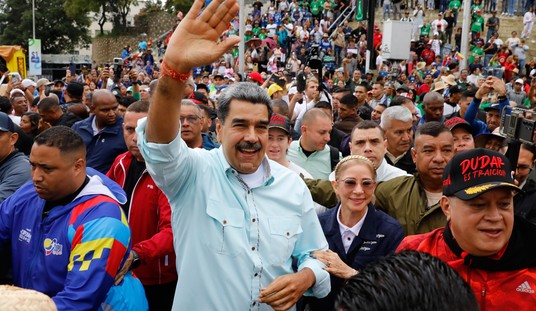C’mon, bro. You know how hypercautious the CDC is about lifting restrictions.
Indoor mask mandates aren’t going away until 2022 at the earliest.
Still, it’s nice to see an expert as respected as Gottlieb taking the bull by the horns. “How this seems to work is Gottlieb says it, a couple of weeks later a lib-shaming piece gets published in The Atlantic, and three weeks after that Biden tells the CDC to do something,” Patrick Ruffini half-joked about Gottlieb’s influence this morning. That’s an exaggeration but not a huge one: Gottlieb has consistently been more aggressive on matters like ending outdoor mask mandates and easing restrictions in schools than the federal bureaucracy has, only to have that bureaucracy catch up to his position within a month or two.
Makes you wonder how much the CDC is being guided by “science” versus how much it’s waiting for other scientists to provide it with public political cover before relaxing precautions.
Gottlieb is now ready to lift mask mandates not just outdoors but indoors too:
"I think we can do it right around now," @ScottGottliebMD says on lifting indoor mask mandates. pic.twitter.com/weVu2jTo0q
— The News with Shepard Smith (@thenewsoncnbc) May 6, 2021
To a layman, that seems borderline reckless. No one thinks we’ve reached herd immunity yet. Less than half the population has been vaccinated. Even if you assume that another 20 percent of Americans have natural immunity from having been infected by COVID, more than a third of the country is still vulnerable. Do we really want to ditch indoor mask mandates under those circumstances?
Well, maybe. Read Kyle Smith’s take if you missed it yesterday. If everyone at risk from COVID has now had a meaningful opportunity to get vaccinated, by what logic should we keep restrictions in place? What are we waiting for? Besides, herd immunity isn’t a magical threshold. We’ve already acquired some degree of it, notes Ashish Jha. But, he adds, taking precautions can still help slow the spread even as immunity continues to build in the population:
Real-world evidence from Israel and the United Kingdom suggests that even without hitting the herd immunity threshold, vaccination can drive infections way down. Why? Because immunity in a population is not like an on-off switch. As populations begin to build up immunity, infection spread begins to slow. If people practice even modest levels of public health measures such as mask-wearing indoors or avoiding large crowds, it may be enough to drive infection numbers down substantially. To stretch the fire metaphor, even if you don’t have the flames surrounded on all sides, a little bit of a drizzle combined with some firebreaks may be enough to keep it from burning out of control.
Gottlieb is ready to get rid of one of those firebreaks, the indoor mask mandate, with unpredictable results at a moment when the country is still seeing more than 40,000 cases per day. One argument in his defense is that he’s simply calling for an end to mandates, not for an end to mask-wearing indoors. The unvaccinated could still wear theirs voluntarily to protect themselves while the vaccinated could ditch them to show off their new freedom. The problem with that logic, however, is that it wouldn’t play out that way in reality. Rather the opposite:

Note the second and third lines especially. That phenomenon has been borne out in poll after poll: The vaccinated remain cautious about socializing even after being (partially) dosed while the anti-vaxxers are prepared to throw caution to the wind and get back to normal. Here’s an even more absurd result from the same poll:

In this case people were asked how safe it is for the vaccinated to do certain activities — yet those who have themselves been partially vaxxed are more likely to believe it’s unsafe for them to socialize indoors with unvaccinated people than unvaccinated people are.
Lift the indoor mask mandate, in other words, and we’re apt to see the unvaccinated going barefaced while the vaxxed continue to mask up. Which sounds like a recipe for outbreaks, if not a new national wave.
Jha predicts in his op-ed that the national case count will continue to slide but that we’ll go on seeing localized outbreaks due to disparities in vaccination rates between different communities. No doubt. I’ve written before about the “two-track pandemic” that’s shaping up in which blue states achieve herd immunity or something close to it due to higher rates of vaccine uptake while red states lag behind. This graph bears that out and suggests we may see regional waves going forward:

The northeast and west coast should be wave-proof by fall. The midwest is a mixed bag. The south? Not great.
Ultimately I think Gottlieb’s worried about the public health bureaucracy preserving what’s left of its credibility in case restrictions need to be imposed this fall or winter. If you’re not willing to relax restrictions when cases are declining, he’s thinking, then you can’t expect people to pay attention when you say it’s time to tighten them as cases begin to rise again. Realistically, though, is there any scenario in which Americans will tolerate 2020-style restrictions this fall, no matter how bad things get? Maybe they’d accept an indoor mask mandate being reimposed, but barring the emergence of a monster variant it’s hard to believe that anything resembling a lockdown would be tolerated again. Am I wrong?







Join the conversation as a VIP Member